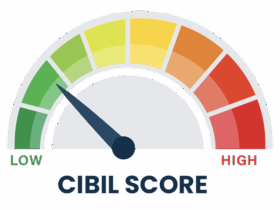The world of cryptocurrency is ever-evolving, and the next generation of coins promises to push the boundaries of decentralization even further. As we look towards the future, it’s fascinating to speculate on the innovations in the crypto landscape.
Lightning-fast transactions
- The most significant challenge faced by current cryptocurrencies is scalability. As the user base grows, networks lead to slower transaction times and higher fees. Next-gen coins are expected to address this issue head-on, leveraging cutting-edge technologies to facilitate lightning-fast transactions on a massive scale.
- A technique that partitions the network into smaller segments called “shards,” is one potential solution—processing transactions in parallel across multiple shards of the network increased. Projects like Ethereum 2.0 and Zilliqa are already exploring sharding to boost scalability.
- Traction is the integration of off-chain scaling solutions, such as state channels and side chains. These solutions enable transactions to be processed off the main blockchain, alleviating the burden on the primary network while maintaining security and decentralization. Projects like the Lightning Network for Bitcoin and the Raiden Network for Ethereum pave the way for off-chain scaling.
Enhancing anonymity and confidentiality
Privacy and data protection concerns are mounting as the world becomes more digital. next gen coin will likely prioritize privacy features, offering users greater control over their financial transactions and personal information. Privacy-focused cryptocurrencies like Moreno and Zcash stride in this area, implementing ring signatures and zero-knowledge proofs to obfuscate transaction details and protect user identities. However, future coins privacy to new heights, potentially incorporating advanced cryptographic techniques, such as homomorphic encryption, which allows computations to be performed on encrypted data without decrypting it.
Integrating decentralized identities (DIDs) and verifiable credentials (VCs) enables users to selectively disclose specific aspects of their identity while maintaining control over their data. This could pave the way for more secure and privacy-preserving interactions within the decentralized ecosystem.
Navigating the evolving landscape
As the cryptocurrency industry grows, regulatory frameworks are expected to evolve alongside it. Next-gen coins must navigate this changing landscape, balancing innovation and compliance. One potential development is the introduction of regulatory frameworks that provide clear guidelines for cryptocurrency projects. This could include requirements for transparency, consumer protection, and anti-money laundering measures. While some view regulations as a hindrance, they could foster greater trust and legitimacy in the industry, facilitating broader adoption.
They are push for greater collaboration between regulatory bodies and cryptocurrency projects. They could develop standards and best practices that promote innovation while mitigating potential risks by working together. This could involve the creation of sandboxes or regulatory incubators, where projects test and refine their solutions in a controlled environment.
Environmental impact- Pursuing sustainability
As concerns over the environmental impact of cryptocurrency mining continue to mount, next-gen coins may prioritize sustainability and energy efficiency. This could involve the adoption of more eco-friendly consensus mechanisms, such as Proof-of-Stake (PoS) or variants like Delegated Proof-of-Stake (DPoS) and Proof-of-Authority (PoA).
PoS mechanisms eliminate energy-intensive mining processes, relying instead on validators who stake their coins to secure the network. This approach significantly reduces the network’s overall energy consumption friendly. Additionally, next-gen coins may explore integrating renewable energy sources into their infrastructure. For instance, mining operations could be powered by solar or wind energy, offsetting their carbon footprint and promoting sustainability.








